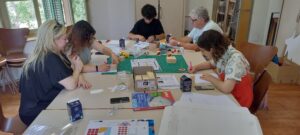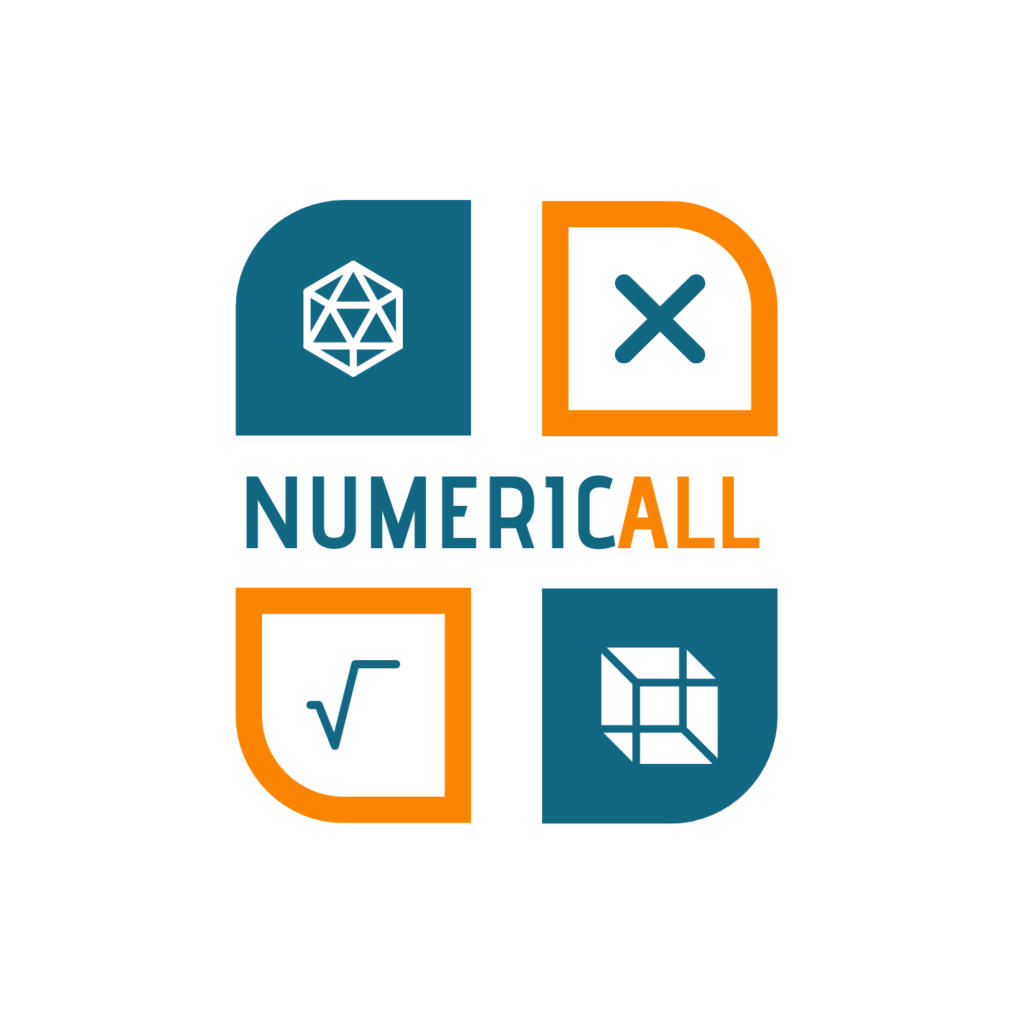From the 30th of May to the 2nd of June a meeting of the members of the Numeric[all] project took place at the MMACA in Cornellà, Catalonia.
The main objectives of the meeting were to review the blueprints, boards and instructions of the DIY creation kit associated to each of the 16 modules of the exhibition.
During 4 sessions of approximately 4 hours, divided into 2 groups, we analysed the proposals one by one, discussing possible improvements, while also reflecting and starting to design the activities that can be carried out in the classroom, and that will end up being part of the didactic guide of the project (C1 activities). In fact, the boards should always be a starting point to motivate and trigger a discussion. This subsequent deepening makes the scope and possibilities of the proposal visible and can also lead to a subsequent modification. A material or resource can be motivating or not depending on how it is used and how it is presented.
The heterogeneity of the groups formed by the project members and their different perspectives meant that the conversations that were generated greatly enriched the results. Any creative process of this kind is iterative and needs several revisions to refine the modules until a version is sufficiently convincing for everyone.
The more people try it out, the more input we get and the more we see which modules need to be modified, which are attractive and which are not, the appropriateness of their degree of difficulty and the interpretations to which the information they contain gives rise. The modules of a museum are a didactic resource that is considered valid in the long term, almost always after several modifications.
Concretely, at the organisational level, the participants were provided with a template where a representative of each group wrote down the comments that arose.
At the same time, another member was in charge of making the agreed modifications to the files.
As for the boards, the text was revised, trying to use clear, short and self-explanatory sentences, following the guidelines to make them inclusive and to ensure that the measurements of the images matched the measurements of the material associated with the module. The designs of iconographies to be added to the boards were specified, representing the main idea of the challenge they pose in order to facilitate the interpretation of the board for illiterate adults.
It was decided to separate some of the boards into 2 to avoid boards loaded with too much information.
In the revision of the DIYs, care was taken to ensure both the clarity and precision of the instructions and the suitability of the materials and options proposed. We all got down to work, cutting, folding and gluing pieces.

A whole afternoon was dedicated to 3D printing. The proposals of the different groups that had made 3D designs of the modules were analysed, looking at the advantages and disadvantages of each of the proposals to decide which would be the final one.
It was also decided which of the modules would have 3D printed versions and which would not.
Although a lot of progress was made, as the materials are piloted it is possible that more aspects will be detected that need to be modified, as the end users are the ones who have the final say, because this material is aimed at them, and our visions may have a certain bias.
Once the changes resulting from this meeting have been made, the first piloting with these new versions will take place at the MMACA on 14 June this year.





